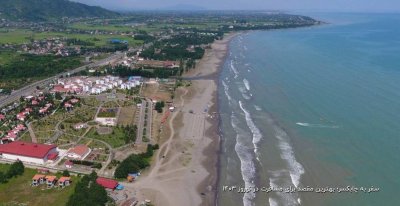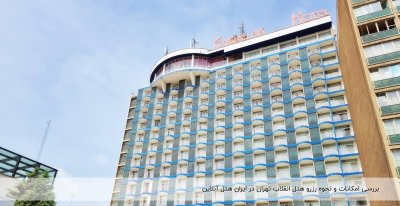Amin 4D
مدیر انجمن <A href="http://forum.majidonline.com/f
سلام به همگی. خوبید الحمدالله؟ ایام به کام.
ورژن جدید رسید وی ری رسیده با یه عالمه ویژگی های خوب. . با چیزایی که ازش شنیدیم باید فوق العاده باشه. تا تست کنیم و مشخص بشه بازم.
http://vrayforc4d-1-8.s3.amazonaws.com/VRAYforC4D_1-8_OSX_v15.zip
http://vrayforc4d-1-8.s3.amazonaws.com/VrayForC4D_R1.8_WIN_X64_R14_R15.zip
http://securebucket.s3.amazonaws.com/Vray_tools.zip
اینم توضیحاتش:
ورژن جدید رسید وی ری رسیده با یه عالمه ویژگی های خوب. . با چیزایی که ازش شنیدیم باید فوق العاده باشه. تا تست کنیم و مشخص بشه بازم.
http://vrayforc4d-1-8.s3.amazonaws.com/VRAYforC4D_1-8_OSX_v15.zip
http://vrayforc4d-1-8.s3.amazonaws.com/VrayForC4D_R1.8_WIN_X64_R14_R15.zip
http://securebucket.s3.amazonaws.com/Vray_tools.zip
اینم توضیحاتش:
VRAYforC4D 1.8 features & release time information
Dear Users,
we are very happy to be able to announce the next big update on our render software called V-RAYforC4D 1.8 [using V-Ray 2.45core], and give you more detailed information, so you know what is coming. it is the biggest update so far in V-RAYforC4D history:
1) Time frame for the release:
VRAYforC4D 1.8 is scheduled to be released this September
2) Feature list [excerp]:
- new refreshed code base, almost all aspects of the version 1.8 are completely rewritten
- V-Ray vrscene system (same as Maya, Xsi, etc)
the version 1.8 is the first version on c4d based on the now available V-Ray native ".vrscene" system. it is the same used for other V-Ray versions, and enables totally new ways of compatibility between the available V-Ray versions and make V-Ray features and development possible, that was not doable before within c4d. in addition as very important aspect it makes update work and incorporating new V-Ray tools & shaders a lot easier, more straight forward and faster for development.
- DR/Distributed Rendering:
distributed rendering is a feature of the vrscene /V-Ray Standalone application to render the render buckets directly on all computers of the network, it is specially good for rendering big still images, but V-Ray DR can render also previews, even in editor or interactive region window. an image rendering many hours can be therefore rendered in only a few minutes on a DR farm. Previews in editor can be made in seconds instead of many minutes. one license enables to use unlimited CPU's on up to 10 DR nodes per license, on modern systems that can be as much as 160 or more cores on one single image/frame (it is also possible to add more standalone nodes). this is the same DR system also available in V-Ray Maya or XSI,the same DR farms can be used(!). In addition the C4D development team also worked on a version using the c4d Netrender/cmdline application which enables the use of many of the native c4d shaders *), together with the otherwise used new native V-Ray shaders.
- new full motion blur in C4D:
C4d has no motion blur sdk interface at all to use, and some important sdk parts aren't accessible et to 3rd party engines, adding real motion blur support, including the important subframes (otherwise it would be polygonal and not smooth) is very hard in cinema 4d and only possible due some "tricks". after longer development time V-RAYforC4D is now the very first 3rd party render plugin we know on C4D supporting full motion blur in all aspects-with subframes, (using the similar tricks to achieve that as the internal "physical renderer"). it supports geometry deformations, point level animation, instances, mograph, proxies, particles, rotation, camera and object animation, and subframes including per object subframe control (!), which is not available in the internal p. render.
-new & expanded (vrscene sdk) based multi pass system:
the multi pass system has been rewritten also from scratch, it enables a lot more new channels, special layers, ids masks, "extra tex" layers and more. it enables a professional multi pass system identical to the famous V-Ray Maya multi pass*), used in the movie Avatar, which was used in many feature films and productions already. all aspects are now of course with full control, including filtering and full AA options. due the vrscene system any future channels added to the V-Ray sdk can be also quite easy added into c4d.
- new multi pass interface:
the developer team worked on a new type of interface that allows dynamically drag and drop, add, remove or and renaming of layers (also hierarchical, aka "tree" like), the new multi pass system is the first to use this new interface and code structure. forthcoming version can use this hierarchical and very flexible (node) system also for things like materials
- .vrscene file format export: via the DR interface it is possible to export V-ray native setup scenes to the V-Ray native vrscene format. the output is compatible and identical to the other V-Ray versions, and can be used in mixed environments or farms. (animation and or DR, commercial render farms)
- V-Ray standalone support: via the .vrscene file format any V-Ray native scene, from c4d or any other V-Ray version can be rendered on a V-Ray standalone application (including RT mode, or DR, or DR via RT or render farm systems or render manager using V-Ray Standalone)
- new very latest V-Ray core 2.45:
the V-RAYforC4D 1.8 version incorporates the very latest V-Ray core used in the recent V-Ray Max or Maya version (SP 2.4), so all code adjustments, speed improvements in sampling, GI, etc are also in V-RAYforC4D. the output is compatible also with the latest available V-Ray Standalone versions.
- New interface to load and use native V-ray shaders within c4d (anywhere):
any V-Ray shaders in the V-Ray sdk can now be loaded and used within C4d, also new future V-ray shaders will more or less automatic load or can at least be added easy, even 3rd party shaders if conform with the V-Ray sdk shader format. This opens a whole new world. V-Ray shaders can be nested one into each other, so where one normally in c4d has a colour input only, V-ray shaders can load another shader or bitmap. this allows for very complex set-ups. some V-Ray shaders are very high end. they can be used in any slot of the c4d V-Ray brdf materials, and they are used for V-ray native work flows or if planned to export as vrscene file for use with V-Ray Standalone or in combination with other V-Ray versions. as Chaosgroup recoded many of the shaders from Maya or and Max or even xsi within the V-Ray sdk, all these shaders are now available within C4d too.
- reflection and refraction interpolation feature within the BRDF material (point based): this can greatly speed up rendering in intelligent undersampling blurry reflections. it is in addition to the other reflection interpolation i nthe LC GI tab via gI rays,or for secondary GI rays. it has controls similar to the Irradiance map in GI or SSS2 settings.
- V-Ray car paint material:
the famous V-Ray car paint material is now incorporated into C4D, it enables to easy add any multilayer realistic car paint including detailed flakes control in a few clicks. as with any other multilayer reflection sampling in V-Ray it doesn't sum up in render time if more than one layer is used.
- V-Ray flakes layer:
the V-Ray layered BRDF material in C4D has become and extra channel layer above reflection, to add flake effects to any material.it can be used to built custom car paints via te BDRF or any other special effects like snow or other glittering effects.
- V-Ray procedural Hair(proxy like):
the latest vray sdks offer a very advanced render method for real 3d hair without using actual generated geometry. it uses a similar interface as the proxy 2 feature. this new system is now available within c4d via V-Ray. it renders the hair fibres at full quality, just as any real object, it is seen in reflections, refractions, dof, blur and behind alphas just as any polygons, only needing a lot less ram, and if used in large amounts quite faster. it can be animated, it mapped and textured.
-V-Ray Fast Fur 2(updated):
the free included extra tool Fast Fur is now capable of using the new procedural V-Ray hair features, and sample base textures, as well as separate root tip colour controls. some features also have been expanded. it enables also users of smaller c4d versions to produce great hair, grass, fur or fibres.
- Support for MAXON hair and V-Ray procedural hair:
MAXON hair now supports the new full procedural V-Ray hair rendering. it enables C4D users to render MAXON hair in unseen quality - fully physical calculated,but without the need to use a geometry mode or to generate geometry in advance. this also saves huge amounts of ram and render time. the MAXON hair controls are on the fly connected to the V-Ray hair interface. it supports now sampling colors of the hair from their base objects textures or shaders, and also detailed root tip control. the MAXON hair material shape and density controls are also supported. it can be animated in all ways too.
- MAXON fur and feather support (!):
V-Ray even can now render the special fur and feather tools from MAXON studio bundle. also done via the new procedural V-Ray hair.
- new Vray physical BRDF Hair material:
in the very last V-Ray Max & Maya versions a new physical BDRF hair material has been introduced, this is now also available in the C4D version. despite being a real physical hair calculation of hair translucency7scattering and back side speculars, it renders very fast and makes the beautiful shading and gloss of hair possible, like we see it in reality.
- rounded edge feature:
all V-Ray BRDF materials have now the so called "rounded edge" feature, which can be easy activated in one click. it can be used to add a small bevel or rounding too sharp modelled edges. in reality nothing has totally sharp edges. modelling every object with rounded edges costs a lot of time and makes models unneeded huge in ram and disk size. the round edge feature can add great realism to your scene in rounding any objects in just one clicks, is is on per material base,so one setting can bevel many objects at once very easy.
- highly optimized proxy export and reparation time. scenes with many proxy objects tend to export many times faster now. in our tests scenes which exported and prepared in older versions for 45sec-1min, start render now in only 5 seconds.
- render speed up and ram reduction of proxy rendering:
the render speed had been further optimised, and the ram consumption of proxy2 instances greatly reduced.
- V-Ray spline rendering:a new tool to direct render splines in V-Ray has been added.it renders splines with controllable thickness in a procedural way using only very low memory for it.
- V-Ray particles: a new interface has been added to the new V_Ray particle feature. it enables particle rendering in a more easy and ram efficient way, and connections to other special particle renders/plugins (like the planned X-particle support*)
- new geometry based SSS2 mode: enables a different, more precise sampling option, useful for special detailed SSS needs using the fast SSS2 material or channel
- new SSS2 caching. calculated SSS can now be cached and reused , even for animations.(saved to external files)
-greatly speed up material previews:
the preview system has been new rewritten and optimised, c4d previews and V-Ray previews can be used now, both greatly speed up in reaction, even with with complex glossy reflections
- new option to set subdivision extra for material preview:this is very useful for using work flows with high material subdivisions, it enables still very fast feedback in the material previews
- enhancement in full 32 bit LWF workflow:
the editor can now be separate set in this option,to enables correct 8 bit preview in editor and simultaneous 32 bit rendering in picture viewer
- camera mapping *):
most likely the camera mapping will be possible to include in this version, we await some vray sdk code here which enables it.if it cant be in v1.8 it comes short after in a smaller update.
- on windows, optionally use of the VRAY frame buffer (VfB), the V-Ray frame buffer is an alternative application window, similar to the c4d picture viewer. it is scheduled most likely to be ready for 1.8 but might come a short time after 1.8 release if time wise not possible. osx vray buffer is a lot more difficult for technical reasons, it is planned for an later update.
-support for newest C4d versions (works already in future c4d v15 update)
3) Perspective:
the vrscene system makes a lot different, it is now easier and faster to adopt to new V-Ray sdk cores and to add new V-Ray features. the next versions are aimed to get the c4d V-Ray version as far feature ident to the longer existing maya and max version.also it makes it possible for us to add some features which are only possible with the vrscene system, like V-Ray RT or the unbiased vertex merging.
we want to give you an outlook to what we work on and what will come:
some features that won't make it time wise into the 1.8 release but are close to get ready (and if needed fixes) will come in smaller fast 1.8.x updates. those can be additional support for c4d shader sin DR, some multi pass channels that might not get ready in first 1.8 release, and features where already hinted for this possibility above.
the next big update is scheduled not too long after 1.8. and called v2.0. the c4d v2.0 will use most likely the V-Ray 3.0 core (if it is finalized and usable then already). at the moment we test already the v3.0 features in alpha versions. the version 2.0 will come with several 2.x updates/service packs. the most important feature is the integration of V-Ray RT (interactive rendering) into the c4d user interface. but also many of the announced V-Ray 3.0 features, and yet some other interesting features.
here a list of some of the features scheduled for next updates**):
- V-Ray RT 3.0 (GPU + CPU + DR, includes proxy, multi pass, motion blur and displacement, for production render)
- new Vizmat material support: a format all V-Ray version can read and render. the materials can be saved as external files and exchanged and used by any of the available V-Ray versions. the next step in compatibility among the application platforms.
- new Vizmat editor: it is a very detailed material editor, similar to our c4d BRDF now (layered) that can be used without any other application, or optionally also within any V-Ray version.
- tex baking direct from within c4d c via V-Ray
- glow and glare interface (during render and/or as post effect)
- greatly speed up brute force rendering (BR_BR) and complex hair rendering,
- a new unbiased render method using the very new method called "vertex merging", (no noise or fire flies, clean caustics)
- Colimo support (with light layers)
- deep image and exr 2.0 support
- OSL shader support
- render time metaballs
- and some yet secret new features (we are under chaosgroup NDA of course)
4) V-RAYforC4D 1.8 pricing info:
despite being the biggest update so far in our history, the update will be given free, at no extra cost to all existing customers, or customers who buy V-Ray now before September release. in addition a special bonus included at the moment - a voucher that ensures you a fix reduced update price of only 99.-Euro netto for the 2.0 update. (all users that bought before under this offer are of course still valid for the special v2 price)
*) marked features that doest make it into the 1.8 in time will come short time after in smaller updates (1.8.x)
**) the v2.x (V-Ray 3 core) feature set given here from to days perspective. it is most likely to come, but can change a bit of course. regular updated infos are in the official V-RayforC4D support forums,
for questions please use the official V-RAYforC4D forum or email us (if you arent a user yet)
for questions please use the thread here in the main forum:
http://forum.vrayforc4d.com/showthread.php?t=13698
the V-RAYforC4D Team











